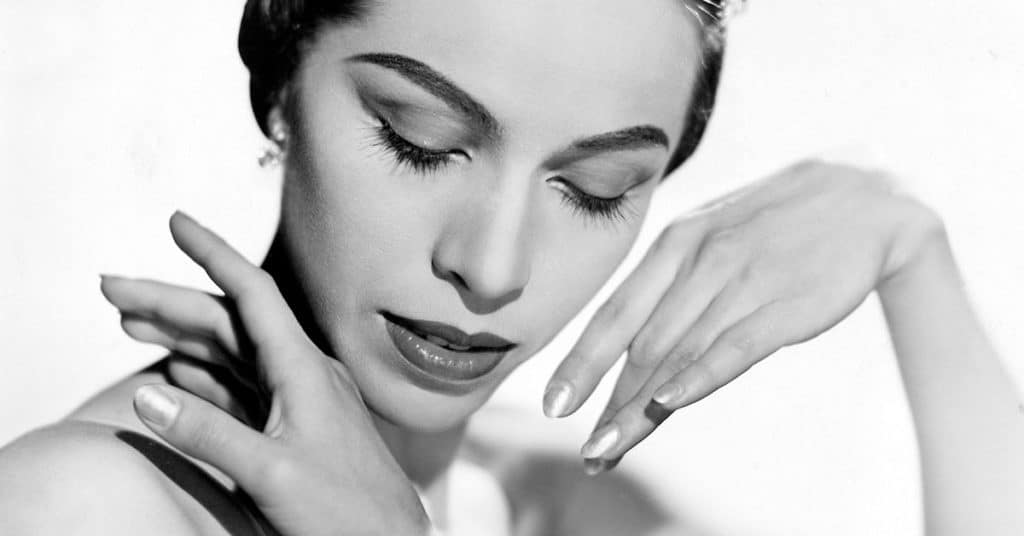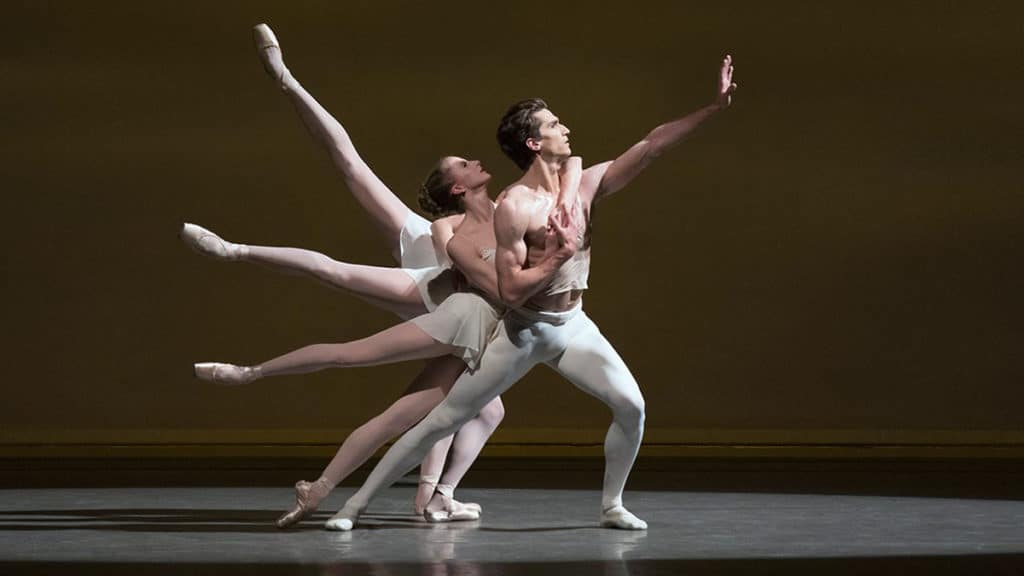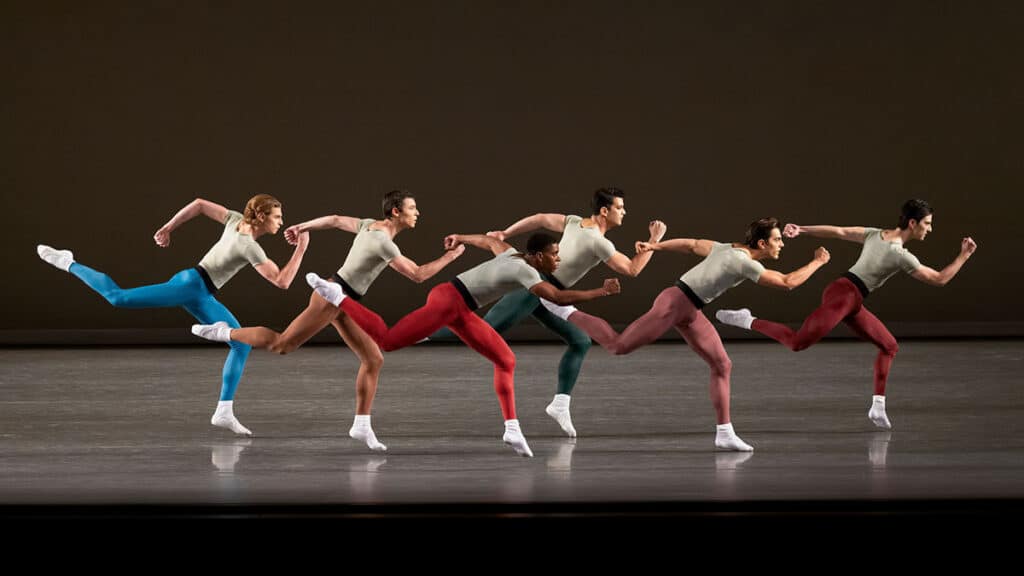
New York City Ballet’s Winter 2025 Season features world premieres by Resident Choreographer Justin Peck and Artist in Residence Alexei Ratmansky, plus ballets originated by Native American ballet legend Maria Tallchief including “Firebird.” The season’s grand finale is Martin’s “Swan Lake.” It’s all at the David H. Koch Theater in Lincoln Center; from January 21 – March 2, 2025.
Maria Tallchief’s 100th Birthday Celebration
Maria Tallchief, Native American Osage Nation, was America’s first prima ballerina. Balanchine developed his “Nutcracker” for her.
New York City Ballet Spring 2025 Season
New York City Ballet’s Spring 2024 Season features Balanchine’s “Apollo,” plus works set to Ravel. There is also contemporary ballet by Ratmansky, Wheeldon, and Abraham. The season finale is Balanchine’s “A Midsummer Night’s Dream;” at the David H. Koch Theater in Lincoln Center; from April 22 – June 1, 2025.
Balanchine’s “A Midsummer Night’s Dream” is from May 27 – June 1, 2025.
Apollo Was Mr. B’s Muse

“Apollo” (1928), the oldest ballet in City Ballet’s repertory, is the work that made George Balanchine famous. The story of Apollo’s coming-of-age under the influence of the muses, mirrors Mr. B’s own creative journey. The piece, choreographed for Sergie Diaghilev’s Ballets Russes, was when Balanchine decided that he didn’t have to hold tightly to tradition, that he could begin letting go. It was his transition into creative maturity.
What is in that pose where four dancers become one in one of the most striking poses in all of ballet? We see Ubuntu, the South African concept that “I am because we are.” By himself, Balanchine was just a man. With dancers, he was a god, he became Apollo himself. I am because we are.
New York City Ballet “The Nutcracker” is The Big One
New York City Ballet “The Nutcracker;” is at the David H. Koch Theater in Lincoln Center; from November 29, 2024 through January 4, 2025. Tickets go on sale on September 23, 2024 at 12pm. From $112. 🇺🇸 🇧🇷 🇵🇷 🇪🇸
New York City Ballet “The Nutcracker” is a big production. Tschaikovsky’s score and Balanchine’s choreography are presented by 90 dancers, 62 musicians, 32 stagehands and a rotating cast of more than 125 children from New York City Ballet’s School of American Ballet. This ballet gives many young dancers their first experience on stage, and what a stage it is.
New York City Ballet turns us all back into children with a one-ton Christmas tree that grows from 12 feet to 40 feet ~ right before your eyes. The costume for Mother Ginger, the dancer with all those children under her dress, weighs 85 pounds, is nine feet wide, and requires a stage crew of three. Somehow they keep all those snowflakes white through 47 performances.
New York City Ballet Made the Nutcracker Famous
George Balanchine and Maria Tallchief (Native American Osage Nation), turned an obscure work into the world’s most popular ballet. America’s first prima ballerina danced the Sugar Plum Fairy. Balanchine was in love with her, and it shows in the work. The combination of his choreography and Tallchief’s elegant dancing made “The Nutcracker” what it is today, part of American culture and an essential part of Christmas celebrations around the world.
Today, it is the main fund-raiser for ballet companies around the world. It’s also the ballet that gives many young dancers their first experience on the main stage. It all started here in New York City with Mr. B and Maria Tallchief at New York City Ballet.
The First African American Marie
City Ballet made ballet history in 2019 by casting Charlotte Nebres as the first African American Marie.
Isn’t it wonderful how great art predicts the future? In 2019, nobody could have foreseen that in six months Black Lives Matter would become one of America’s most pressing social issues. But this is how great art works. It’s as if it has a mind of its own. You can’t overstate the positive impact for children to see someone like themselves up on stage.
New York City Ballet Fall 2024 Season Dances Coppélia, Peck, and a Caili Quan World Premiere

The New York City Ballet Fall 2024 Season features Balanchine’s Coppélia, resident choreographer Justin Peck’s 10th anniversary, a Lar Lubovitch company premiere, and a Caili Quan world premiere; at the David H. Koch Theater in Lincoln Center; from September 17 – October 13, 2024. From $54.
Caili Quan is a Chamorro Filipino from Guam. The Chamorro are native Gaumanians. Guam is a U.S. territory that was once part of the Philippines. 🇬🇺 🇵🇭
About New York City Ballet
New York City Ballet dances Fall, Nutcracker, Winter, and Spring seasons at the David H. Koch Theater in Lincoln Center. Founding choreographers George Balanchine and Jerome Robbins created a legacy that is unique in the ballet world. Basically, they made ballet American.
When George Balanchine and Lincoln Kirstein started New York City Ballet in residence at New York City Center in 1948, few could have foreseen the impact they would have on American ballet – and the ballet world at large.
Balanchine brought his Russian Imperial Ballet training, Ballets Russes background, and relationships with legendary ballet composers. Kirstein wanted Balanchine to be able to create freely, and Mr. B did. He continued the development of neoclassical ballet which he started as a choreographer at Ballets Russes in Paris. Mr B led the transition into contemporary ballet. He ultimately stripped away scenery, costume, and story; leaving black and white leotard ballets of pure movement.
Balanchine also carried on the Ballets Russes tradition of collaborating with the best artists of the day. He also helped plant the seeds for Dance Theatre of Harlem. His technique dominates the East Coast with Julie Kent leading Washington Ballet and Lourdes Lopez leading Miami City Ballet.
Jerome Robbins brought his Broadway background and a profound grasp of American culture. He loved African Diaspora dance traditions.
The company’s School of American Ballet has a legacy of developing great dancers. Some become international stars, some become international choreographers, and some go on to lead America’s top ballet companies. In the end, it all comes down to music, choreography, and movement. That is probably exactly what Mr. B had in mind.
Latin Principals and Soloists in the 2024-2025 Season
Latin Principal dancers in the 2024-2025 Season include:
- Jovani Furlan is a Principal from Joinville, Brazil. @jovani.furlan 🇧🇷
- Roman Mejia is a Soloist from Fort Worth, Texas. @roman.julian.mejia 🇺🇸
Latin Soloists in the 2024-2025 Season include:
- Sebastian Villarini-Velez is a Soloist from San Juan, Puerto Rico. @el_vinyl_seb 🇵🇷
- Erica Pereira is a Soloist from Northport, New York. @peanutica 🇺🇸
- Aarón Sanz is a Soloist from Madrid, Spain. @aaronsmadrid 🇪🇸
Glass Pieces is So New York City
If you’ve never seen “Glass Pieces,” it will blow your mind. It’s an intersection of all the crazy things happening in New York in the early 1980s. The shape-shifting repetition of the music of Philip Glass, and surprising dance geometries reduce the rush hour energy of the Manhattan grid to a living Mondrian painting on the ballet stage. The first time I saw it (with former NYCB Prima Suki Schorer), I just sat in the theatre and cried. It was so beautiful.
Social Media
X @nycballet
Facebook @nycballet
Instagram @nycballet
YouTube @nycballet
Tickets
David H. Koch Theater
Lincoln Center
(left theater on the main plaza)
(212) 496-0600
